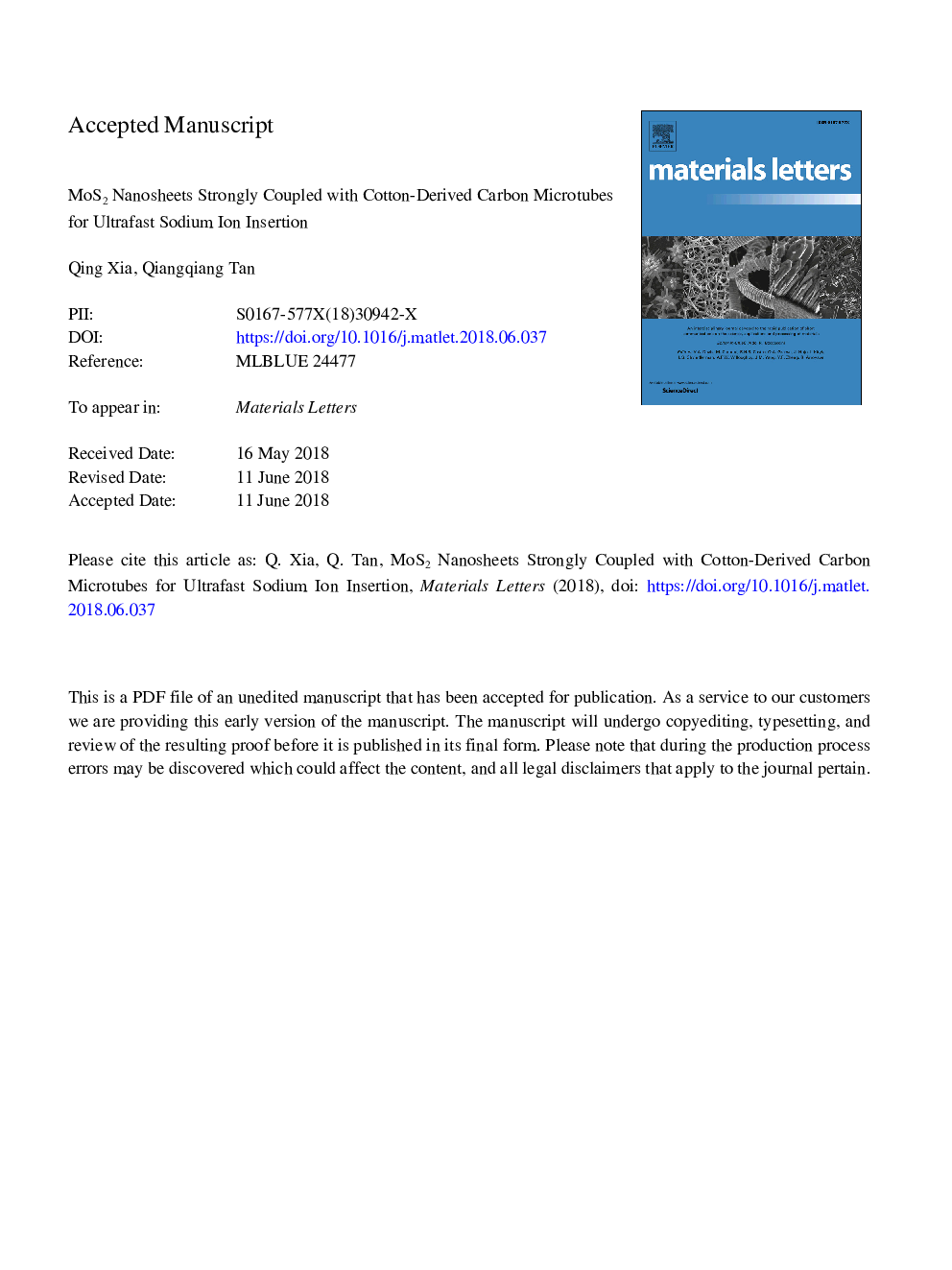| Article ID | Journal | Published Year | Pages | File Type |
|---|---|---|---|---|
| 8012634 | Materials Letters | 2018 | 13 Pages |
Abstract
Molybdenum disulfide possesses a layered 2D structure and a high reversible capacity, which is an ideal candidate electrode for sodium ion batteries. However, the bulk MoS2 suffers from low electronic conductivity and volume variation during cycling, resulting in inferior electrode reaction kinetics and fast capacity decay. In this work, we develop a hierarchical structure comprising MoS2 nanosheets strongly coupled with carbon microtubes (CMTs) derived from cotton by a simple hydrothermal method and a subsequent heat-treatment procedure. The MoS2 nanosheets, the amorphous carbon, and the carbon microtubes in the composite are synergistically building a robust structure, which is favorable for fast sodium ions insertion/extraction and electrons transmission. The prepared MoS2/CMTs electrodes as anodes for sodium ion batteries display stable cycle performance and extended cycle life.
Related Topics
Physical Sciences and Engineering
Materials Science
Nanotechnology
Authors
Qing Xia, Qiangqiang Tan,
